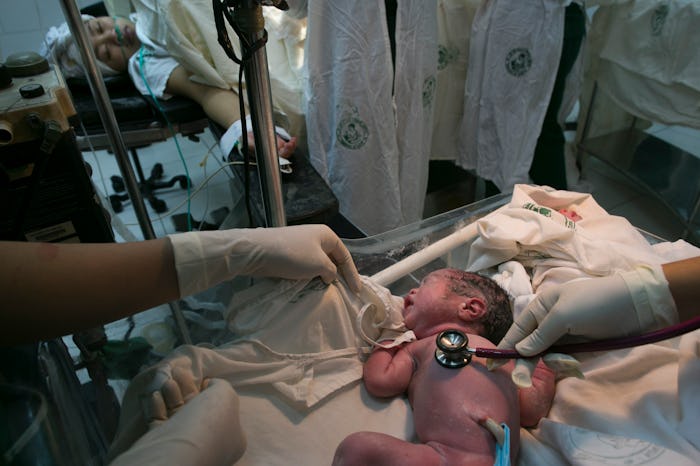News

How Much Would A C-Section Cost Under The AHCA?
When the American Health Care Act passed the House last week, many people started worrying about how they might be affected by the proposed replacement for the Affordable Care Act. It's been the intention of the Trump Administration to "repeal and replace" the ACA since day one, but the House's vote was the first major step toward making that a reality. One of the biggest fears many people have is that they will pay more under the AHCA if they have a pre-existing condition, which would include pregnancy and, therefore, childbirth. To get an idea of the impact it could have, here's how much a c-section would cost under the American Health Care Act.
Generally speaking, the United States is one of the more expensive countries in the world to give birth in, according to The New York Times. And in fact, within the U.S. the amount it costs to give birth — vaginally or via c-section —varies wildly by state. Quoting statistics from a report by Truven, in 2013 Slate reported that on average, a c-section in the U.S. costs $50,000 — approximately $27,866 of which was paid by insurers. That total amount is further broken down by things like facility fees, the doctor's fees, medication, anesthesia and other costs associated with a procedure, and the cost of a hospital room — and that's if there aren't any complications. Add on something more than "routine" and that cost will go up.
That being said, under the Affordable Care Act, maternity care (so, costs associated with pregnancy, labor and delivery, and newborn care) has been considered an essential health benefit. That provision of the ACA is important, because it means that insurance companies have to cover services that are considered "essential." The ACA also made sure that insurance companies couldn't charge higher premiums or deny coverage to people with preexisting conditions — including pregnancy. A report from American Progress did the math on premium hikes for pre-existing conditions under the AHCA and found that insurers could raise premiums for someone who is pregnant by $17,320. As The Independent reported, that would be a 425 percent increase.
While Speaker Paul Ryan has said that people with preexisting conditions can't be discriminated against under the AHCA, that doesn't appear to include when someone finds themselves in a coverage gap, according to The Washington Post. Should a pregnant person find themselves between jobs, or otherwise between insurance plans, they could still face premium hikes as they attempt to get insurance through the private market. And, if the AHCA did what many GOP plans seem to want to do and send decisions "back to the states", it may likely go back to the way it was before the ACA, where many states did consider pregnancy a pre-existing condition and did charge pregnant people higher premiums — if they covered maternity care at all, as the ACA's website points out.
So, all that being said, the exact cost of even an uncomplicated c-section in the post-ACA world could be vastly different depending on where a person lived. Based on the data and what we know about how much it cost to have a baby before Obamacare, it seems reasonable to bet that the price will rise — it's just a matter of how much.